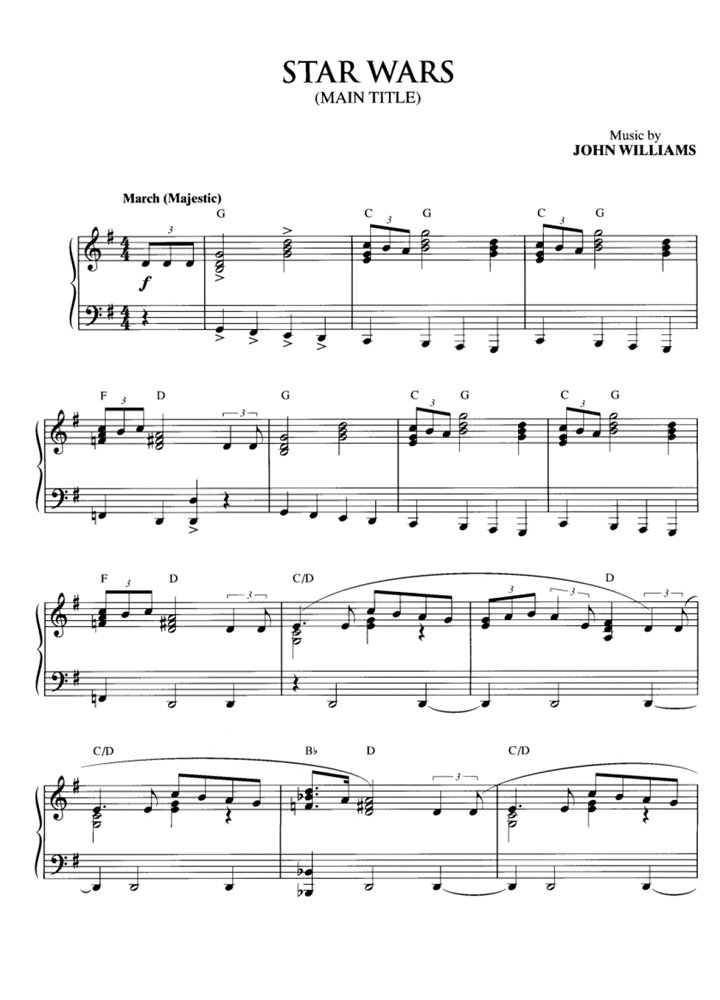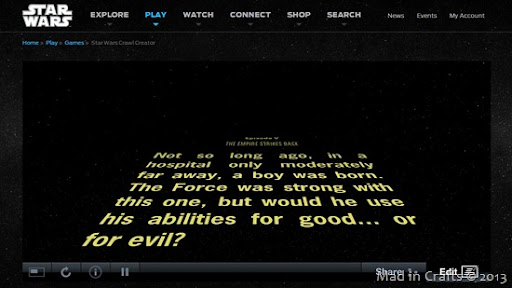
Non copyrighted music for star wars intro full#
Lots of videos are uploaded to YouTube with a disclaimer like “This video is uploaded for educational purposes.”īut it’s just the full video with no transformative aspect. However, your interpretation of “education” my not be the same as a judge’s. The fab fourį our uses of copyrighted material are particularly addressed and often protected by fair use: commentary, criticism, education, and news. So satires, parodies, video essays, documentaries, etc., will usually be protected by fair use.
Non copyrighted music for star wars intro movie#
However, if you uploaded the entire movie to your “education channel,” and you only had a few random voice-over commentaries about color grading or cinematography, that would be a harder fair use argument to support. In the above example of using clips from Saving Private Ryan, you could probably justify as much as 30 seconds to adequately show use of cinema verité. The second question to ask is, “If your use is transformative, are you using the appropriate amount for that transformative purpose?” Usually, this amount is a small percentage of the whole. However, if you took those same clips and dropped them into your WWII short film for the express purpose of being a battle scene, well, in the words of Andrew Garfield to Jesse Eisenberg’s in The Social Network, “Lawyer up!” You’re taking the original media (a piece of entertainment) and using it for education. A clip from Saving Private Ryan’s opening scene in a video essay on how Spielberg uses cinema verité is transformative. A classic example would be the use of a movie clip within an educational context. This is a common term you will hear in discussions of fair use. These four factors boil down into two important questions:įirst, are you repurposing the material for use in a way other than its original purpose? That is what it means for a work to be transformative. In court, it’s the ruling judge’s discretion based on his or her own interpretation of the law. Unless you’re actually sued or challenged, you may never know 100% whether your use adheres to the law or not.

The thing that makes fair use so difficult is that it’s not a clear-cut law.

That is why it is so important for production companies to have contracts in place with both clients and subcontractors with regards to the videos or photographs they create. As long as that image does not infringe on another pre-existing copyright. Unless explicitly expressed, whoever creates an image (photo or video), owns the copyright to that image.

Trademarks are predominantly for the protection of a company’s intellectual property surrounding its brands and logos.

It should not be confused with a trademark which is a form of protection geared towards words and symbols. Simply put, a copyright protects literary and artistic assets such as books, movies, videos, plays songs, photographs, etc. But it should not replace consulting an attorney with regard to your particular situation. I provide plenty of links and references to support the information. Disclaimer: What you’re about to read is a compendium on fair use and copyrights pertaining to film and video production.


 0 kommentar(er)
0 kommentar(er)
